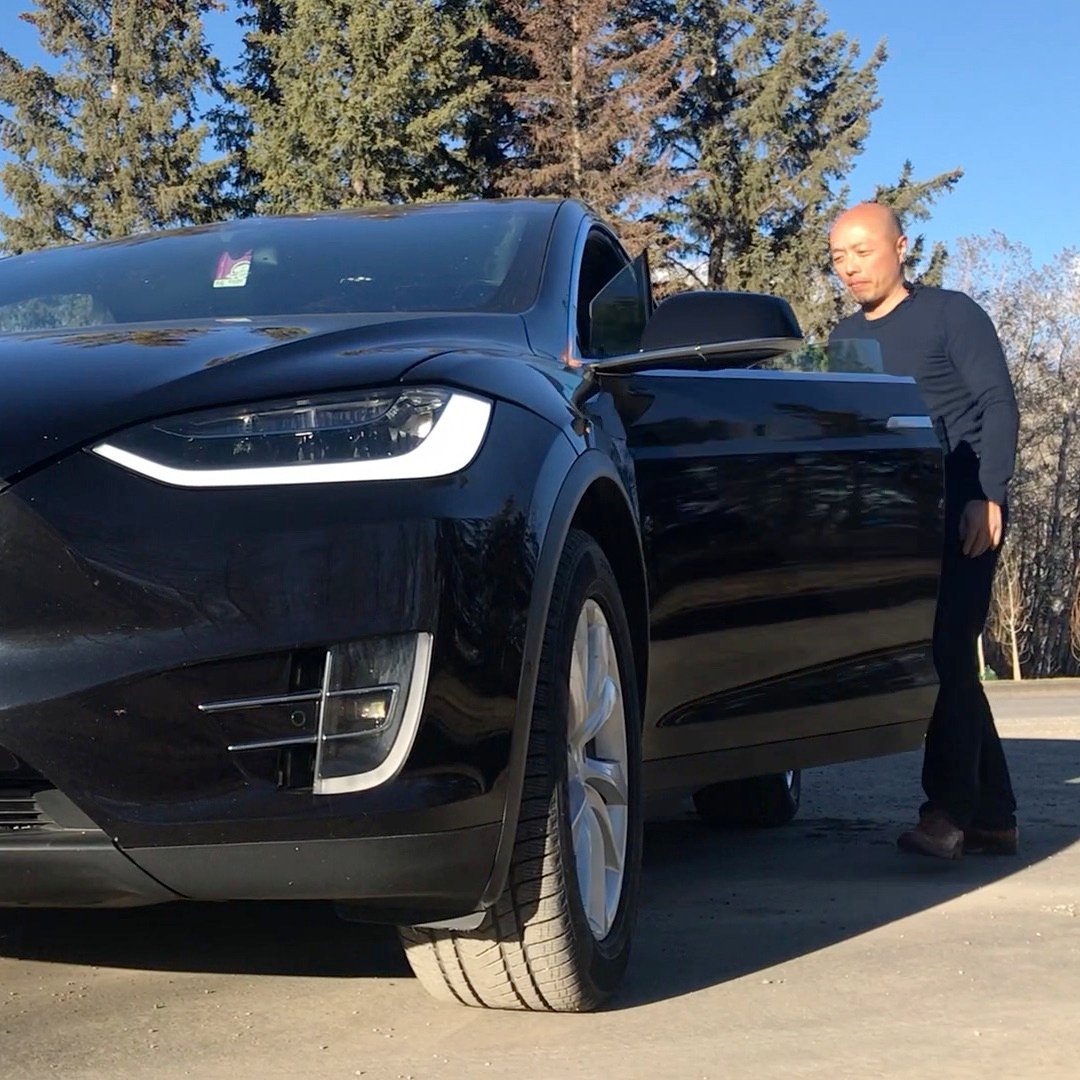Welcome to Part I in our Life With an Electric Vehicle series. We’ll meet early adopters who have taken the plunge to electric vehicles, and find out what’s it’s like making the shift.
Ed Ma was smitten from the start. He eagerly read everything he could about Tesla, and watched from his home in Calgary, Alberta as Elon Musk unveiled the first Tesla Roadsters in 2008.
After that, it was just a matter of time. “In 2009, we made the big mistake of test driving this Tesla Roadster in Seattle Washington,” Ma recalls. “And, from the moment that I got behind the wheel of the car and put my foot on the accelerator, (with) that instant torque and acceleration, I couldn’t think of anything other than that.”
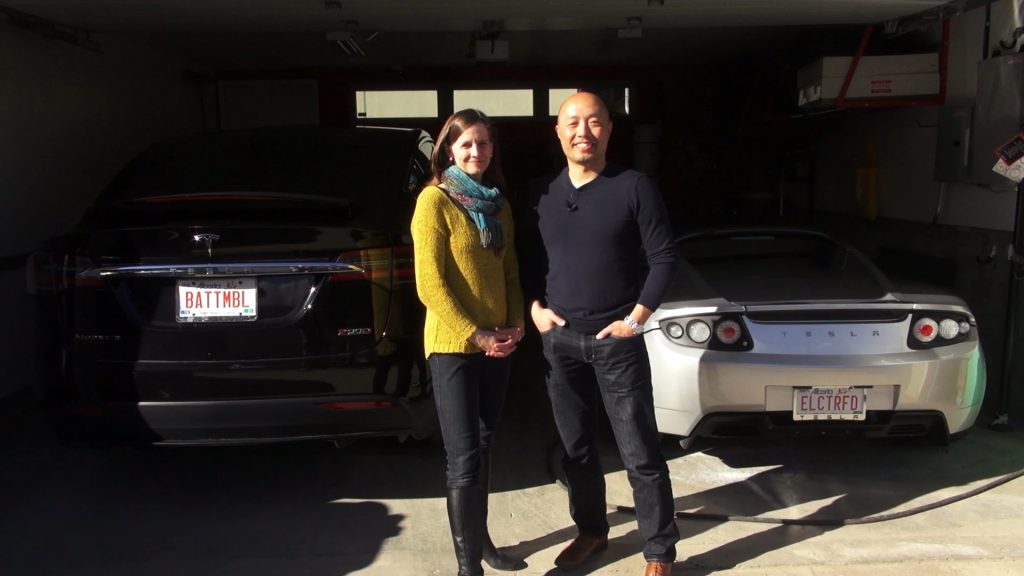
After returning home, Ma couldn’t stop raving about the experience. Eventually, his wife Rhonda Blair turned to him and said: “All right, just go and get the car!”
That debut-model Roadster was a work of art. Built on a Lotus chassis, the carbon fiber car was the first electric vehicle to travel more than 393 km on a single charge. The standard 2010 Roadster could do 0-97 kph in 3.9 seconds, the sport model in 3.7 seconds.
Ma loves the performance, but he’s also proud to own a car that delivers better than 100 MPGe (miles per gallon equivalent).
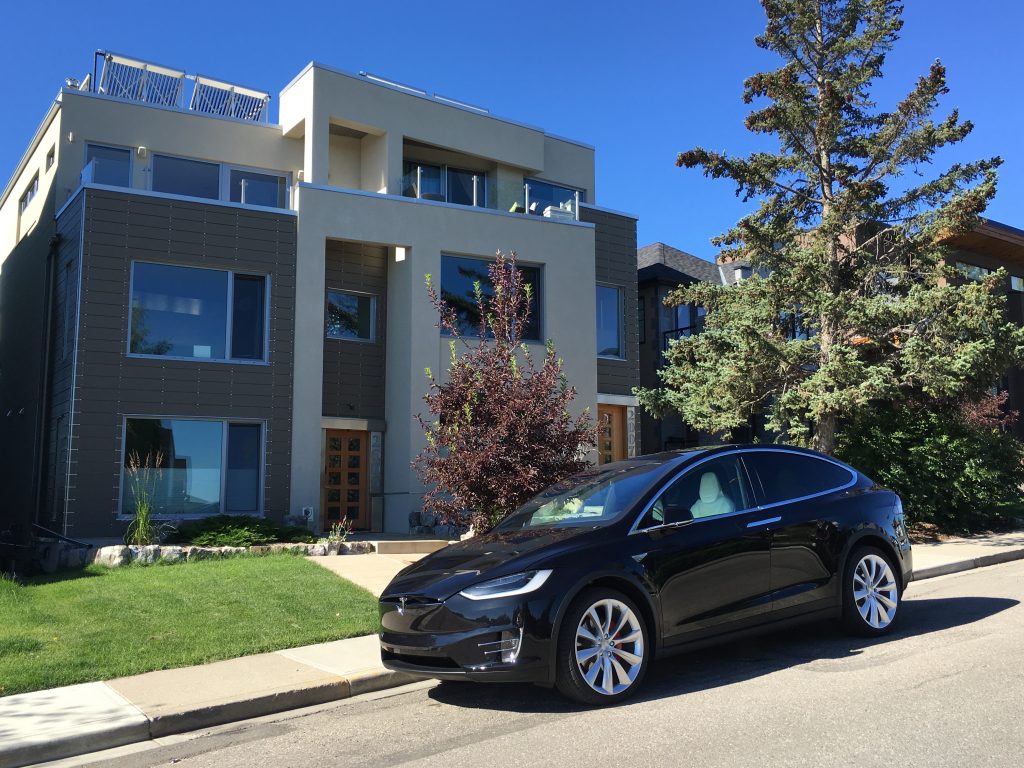
Ma’s environmental streak runs deep. He and Rhonda live in Calgary, the heart of Canada’s petroleum industry, but they built one of the city’s first super-efficient solar-thermal homes. A lawyer by profession, Ed works on the climate change file for a major oil company—shattering the stereotype of oil guys and clean energy guys being irrevocably at odds.
A two-seater may be fun, but it’s not exactly a practical family car. So, a few years later, Ed and Rhonda added a Tesla Model S—the seven-seat family sedan that led the global EV market for years and eventually cracked the three-second mark for 0-97 kph. A year later, they swapped that car out for the SUV-style Model X.
Fill it up for six bucks
The Model X lives up to the Tesla name. “This car that I’m sitting in does zero to 60 in 3.2 seconds,” raves Ma. “And it’s a sport utility vehicle.”
Part of Ed misses the challenge of scouting gas stations for the cheapest price—”I pay the same boring electricity rate every night that I plug in my car.” Of course, that boredom comes with an eye-popping reward: it costs Rhonda and Ed about $6 worth of electricity to “fill up” their Model X. Of course, you have to account for other charges on your electricity, bill but even if we say it’s $10, that’s four times cheaper than my RAV4 which would use 36 litres of gas to go 400 km.
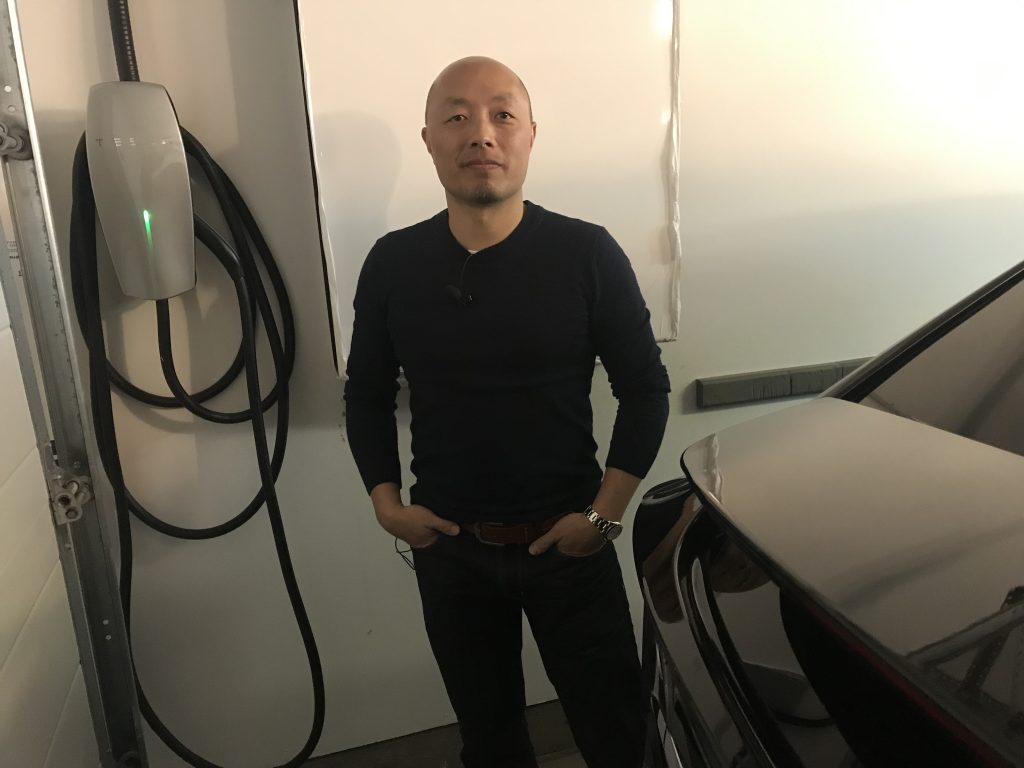
Range is not a concern
With roughly a 400-km range, Ed and Rhonda’s Model X can take them to Banff and back on a single charge. “It doesn’t matter what time of year; we go everywhere with this car,” says Ma.
At home, they use a Tesla level II charger, which takes the Model X from empty to full in less than four hours.
In short, Ma says range has not been an issue. “On average you lose about 20 per cent of your range in the winter. However, with that said, when you have a large battery it really is irrelevant for your daily commutes.
“…That the one advice I always give to people who are looking to buy an electric car: buy the biggest battery that your budget can afford.”
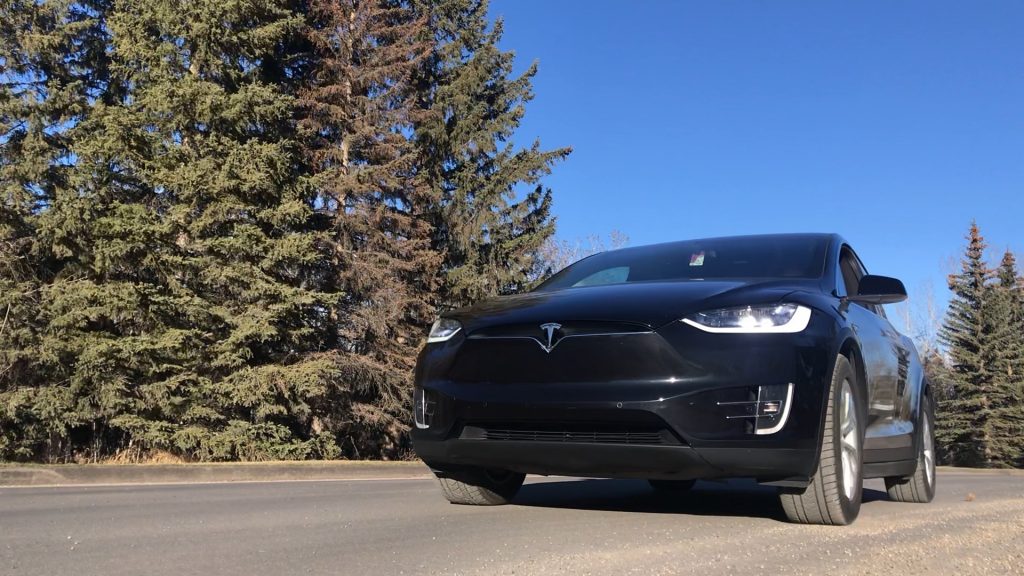
Ed and Rhonda have even driven their Model X back to its California birthplace. They let the Tesla plot its course, navigating between Tesla Superchargers where they could charge for free. A level-III supercharger can take a Tesla from zero to 80 per cent in 30 minutes. “We put about 8,000 kilometers on a return trip and it didn’t cost us a cent,” says Ed.
Soon, they’ll be able to enjoy similar convenience right here in Alberta. ATCO is installing a network of high-speed charging stations across southern Alberta in a project they call Peaks to Prairies. Ed and Rhonda are thrilled at the prospect. “Owning an electric vehicle from a charging station perspective is like a bottle of fine wine. It just gets better over time.”
Maintenance? What maintenance?
With about 120,000 km on the Model X, Ma’s maintenance costs have totaled roughly $2,000—for a replacement set of summer tires. “When you have a car that goes really fast, you kind of burn through rubber a lot quicker than the average car,” laughs Ed.
“We’ve never changed the brakes, and in fact, the brakes are still in great shape. And that’s because of the regenerative braking.”
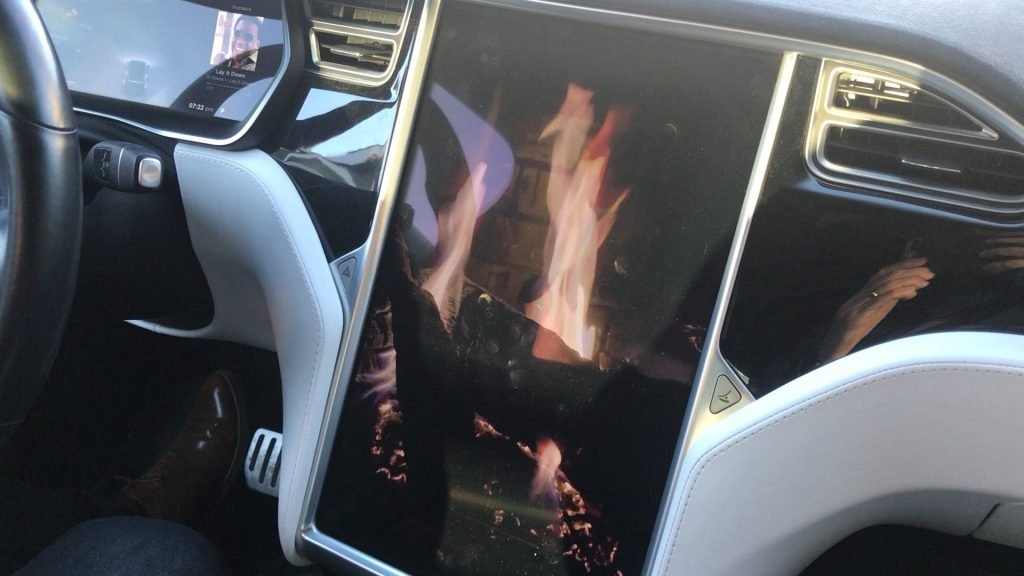
Romance Mode
Despite its practicality, Ed and Rhonda’s Model X has its whimsical side, with some surprising features accessible via its 17-inch dash-mounted video screen. “Really, this car is nothing but an iPad with four wheels and an electric motor.” To demonstrate, Ed touches a button on the screen that says “Romance Mode.” Instantly, a crackling fire appears on the screen. Al Green croons from the sound system, and the cabin temperature rises subtly.
When asked if the romance mode works, Ed blushed and changed the subject. He showed us some of the video games loaded into the system, including a suite of retro Atari titles.
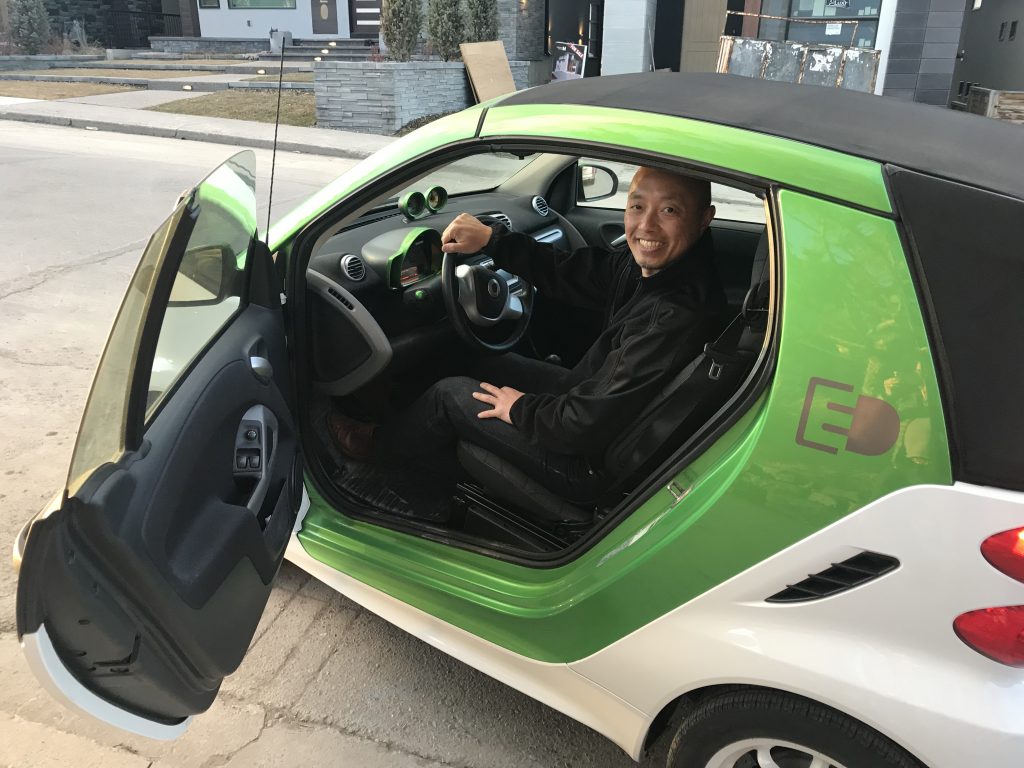
In addition to their Teslas, Ed and Rhonda own a Smart Cabriolet EV with a range of 120 km—perfect for toodling around town. “You can park it anywhere!”
Not surprisingly, Ed already has his eyes on his next Tesla, slated for release in 2020. “The new Roadster is just a beautiful, beautiful vehicle. It does 0 to 97 in one point nine seconds” Ma marvels. “And it’s just a super looking car.” With a 1,100-km range, it will be the fastest production car ever built.
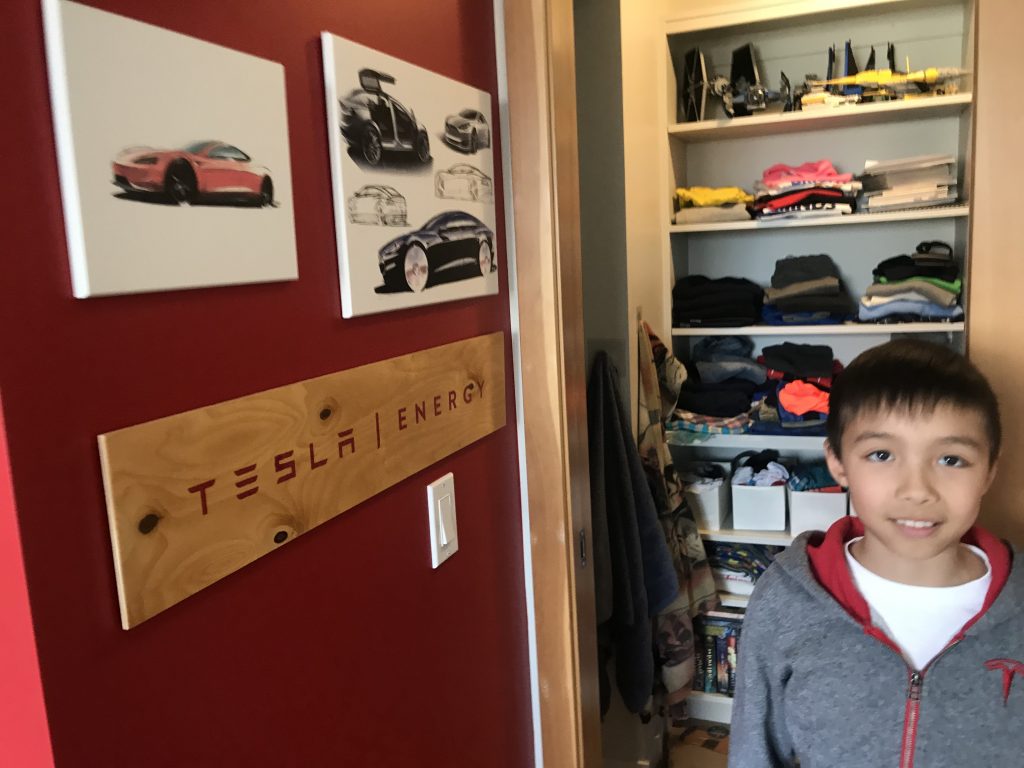
Ed and Rhonda’s 11-year-old son Atley went along on the road trip to Tesla’s facilities in California and has already invested in Tesla stocks with proceeds from his SodaKid business. When asked what car he hopes to drive someday, “Well, when I’m old enough to drive I don’t think I’ll be driving a car because they’ll all be autopilot.”
Judging by Ed and Rhonda (and Atley), once you’re bitten by the EV bug, you’ll never go back. OPEC and Bloomberg have predicted that EVs will account for 50 per cent of new car sales by 2040. With dozens of new EV models entering the market over the next few years, that just might come to pass.
